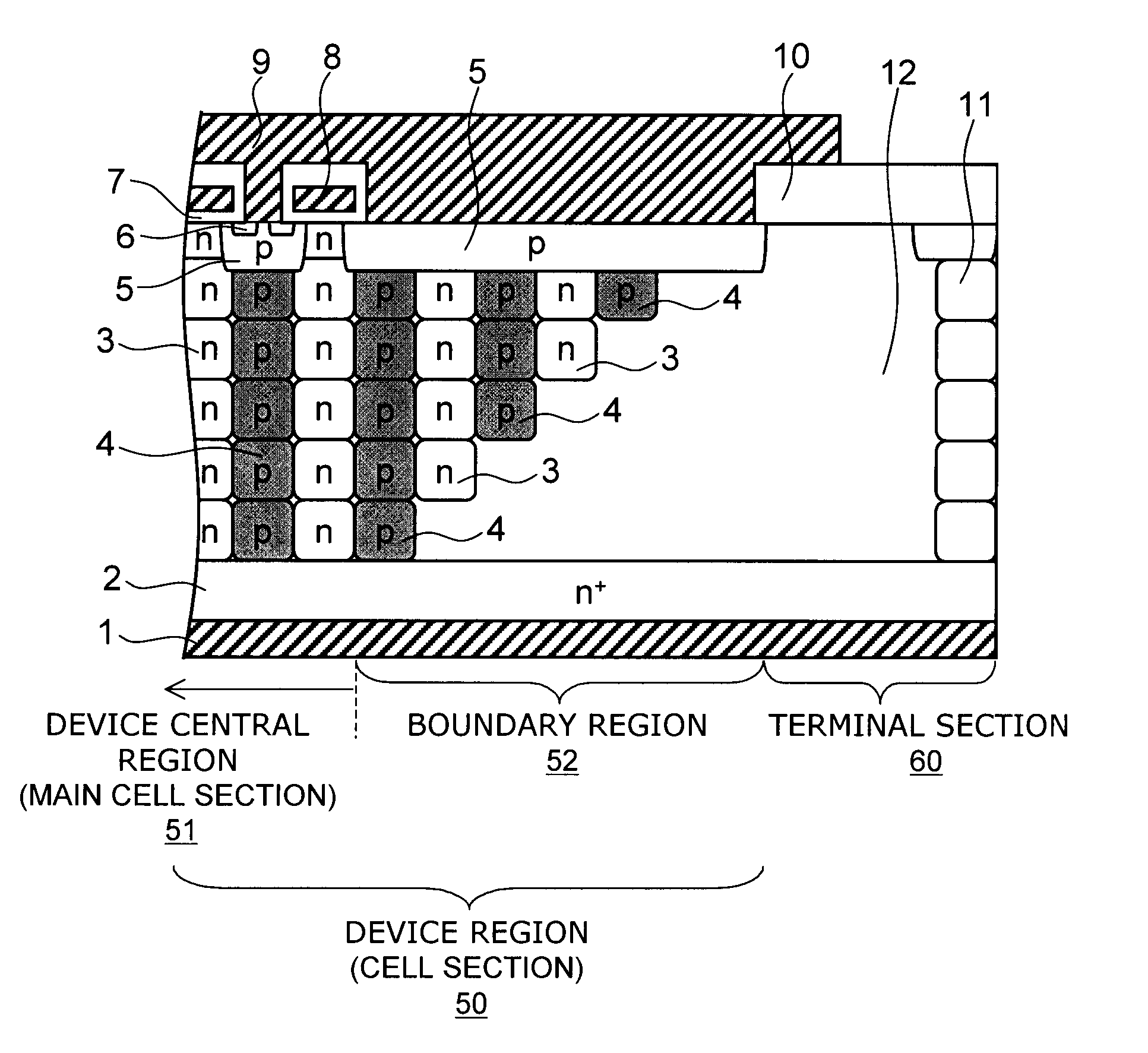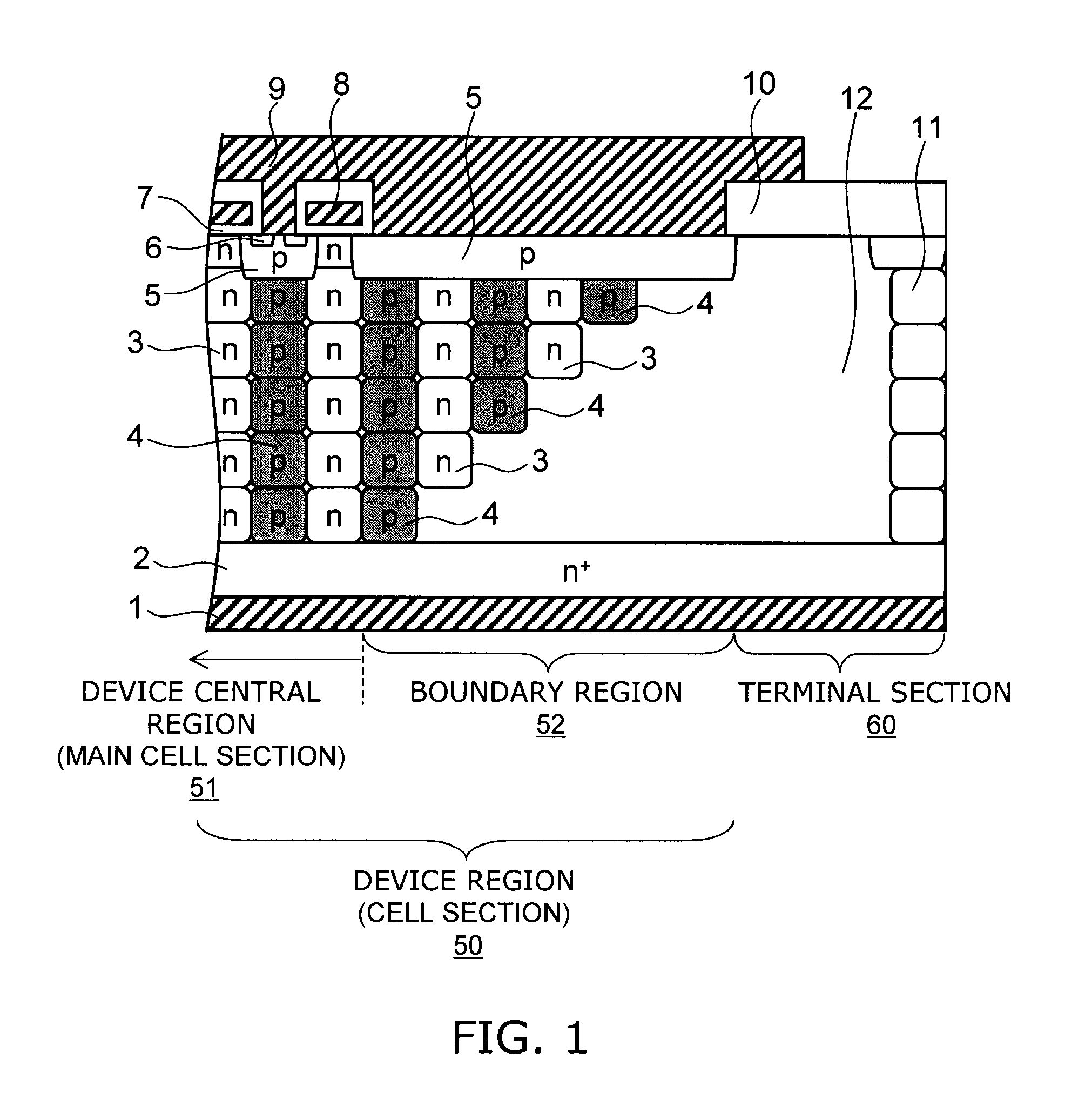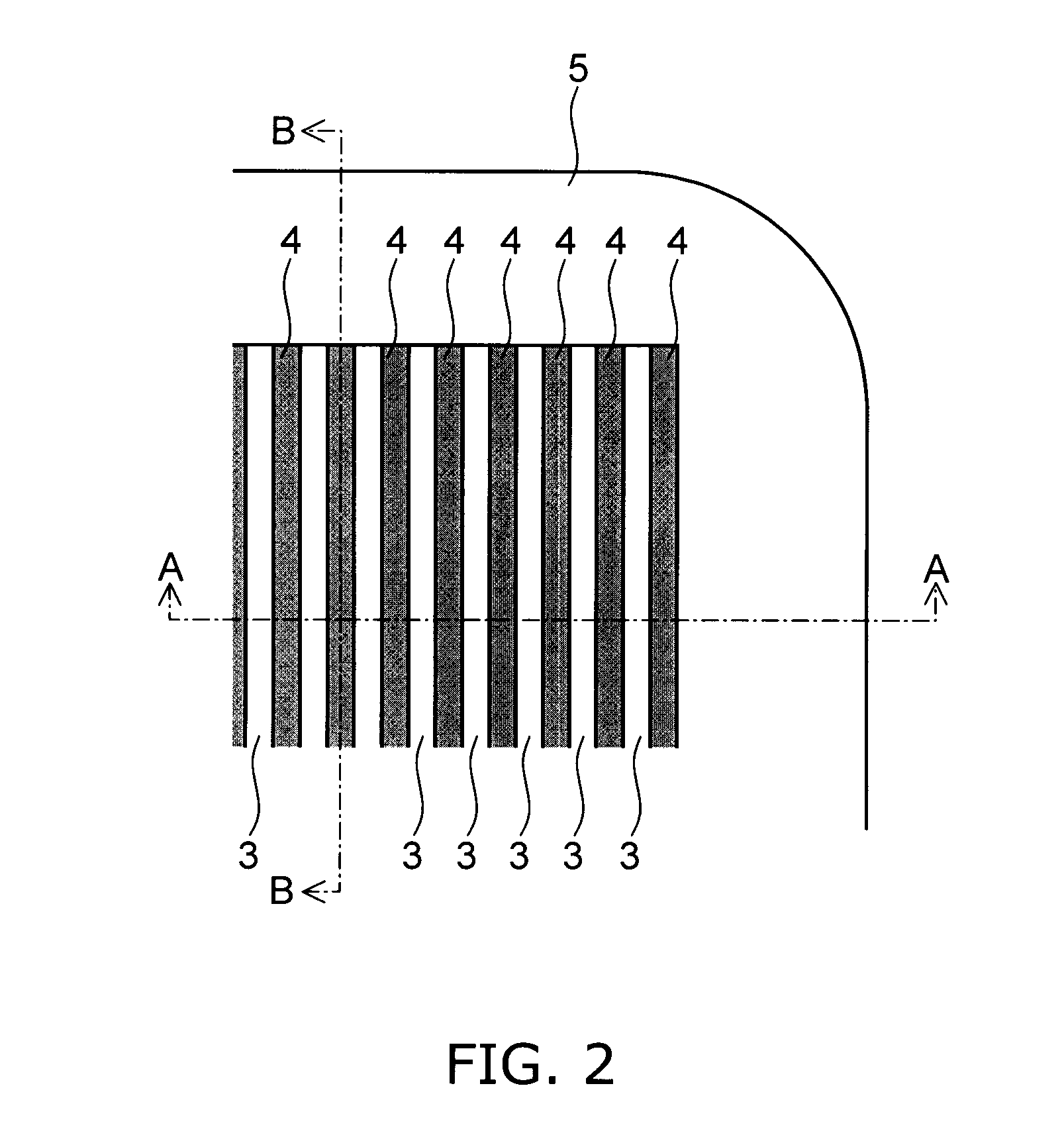Semiconductor device
a technology of semiconductor devices and resist masks, applied in semiconductor devices, diodes, electrical apparatus, etc., can solve the problems of lithography masks and resist masks used for actual implantation, the conversion difference between lithography masks and resist masks, and the breakdown voltage of devices, etc., to achieve the effect of low dopant concentration
- Summary
- Abstract
- Description
- Claims
- Application Information
AI Technical Summary
Benefits of technology
Problems solved by technology
Method used
Image
Examples
first embodiment
[0070]FIG. 1 is a schematic view illustrating the cross-sectional structure of the main part of a semiconductor device according to a first embodiment of the invention.
[0071]FIG. 2 is a schematic view showing an example planar pattern of pillar regions in the semiconductor device according to this embodiment.
[0072] Here, FIG. 1 shows the A-A cross section in FIG. 2.
[0073] On a major surface of a semiconductor layer (drain layer) 2 of highly doped n+-type silicon, first semiconductor pillar regions 3 of n-type silicon (hereinafter also simply referred to as “n-type pillar regions”) and second semiconductor pillar regions 4 of p-type silicon (hereinafter also simply referred to as “p-type pillar regions”) are periodically arranged in a direction substantially parallel to the major surface of the semiconductor layer 2. As shown in FIG. 2, the planar pattern of the n-type pillar regions 3 and the p-type pillar regions 4 has a striped configuration, for example.
[0074] The n-type pill...
second embodiment
[0100]FIG. 9A is a schematic view illustrating the cross-sectional structure of the main part of a semiconductor device according to a second embodiment of the invention, and FIG. 9B is a schematic diagram showing horizontal variation (variation along the direction from the device central region toward the edge termination section) in dopant concentration in the pillar regions shown in FIG. 9A. The vertical axis in FIG. 9B represents the dopant concentration in the pillar region.
[0101] In the embodiment shown in FIG. 9, the dopant concentration in the n-type pillar region 3 and the p-type pillar region 4 in the boundary region having stepwise varied depth is lower than the dopant concentration in the n-type pillar region 3 and the p-type pillar region 4 in the device central region (main cell section). By the stepwise varied depth of the n-type pillar region 3 and the p-type pillar region 4, the portion with no pillar region neighboring on one side is localized. Hence the breakdown...
third embodiment
[0106]FIG. 12 is a schematic view illustrating the opening pattern of a pillar region formation mask for the semiconductor device according to a third embodiment of the invention.
[0107]FIG. 13 is a schematic view illustrating dopants implanted into the C-C cross-sectional portion in FIG. 12.
[0108]FIG. 14 is a schematic view illustrating dopants implanted into the D-D cross-sectional portion in FIG. 12.
[0109]FIG. 15 is a schematic view illustrating dopants implanted into the E-E cross-sectional portion in FIG. 12.
[0110] The opening pattern of the pillar region formation mask shown in FIG. 12 is an example pattern for forming a superjunction structure in a striped configuration. A dopant for forming the p-type pillar region, e.g. boron 14, is implanted through the opening 17 of the p-type pillar region formation mask. A dopant for forming the n-type pillar region, e.g. phosphorus 15, is implanted through the opening 16 of the n-type pillar region formation mask.
[0111] By graduall...
PUM
 Login to View More
Login to View More Abstract
Description
Claims
Application Information
 Login to View More
Login to View More - R&D
- Intellectual Property
- Life Sciences
- Materials
- Tech Scout
- Unparalleled Data Quality
- Higher Quality Content
- 60% Fewer Hallucinations
Browse by: Latest US Patents, China's latest patents, Technical Efficacy Thesaurus, Application Domain, Technology Topic, Popular Technical Reports.
© 2025 PatSnap. All rights reserved.Legal|Privacy policy|Modern Slavery Act Transparency Statement|Sitemap|About US| Contact US: help@patsnap.com



